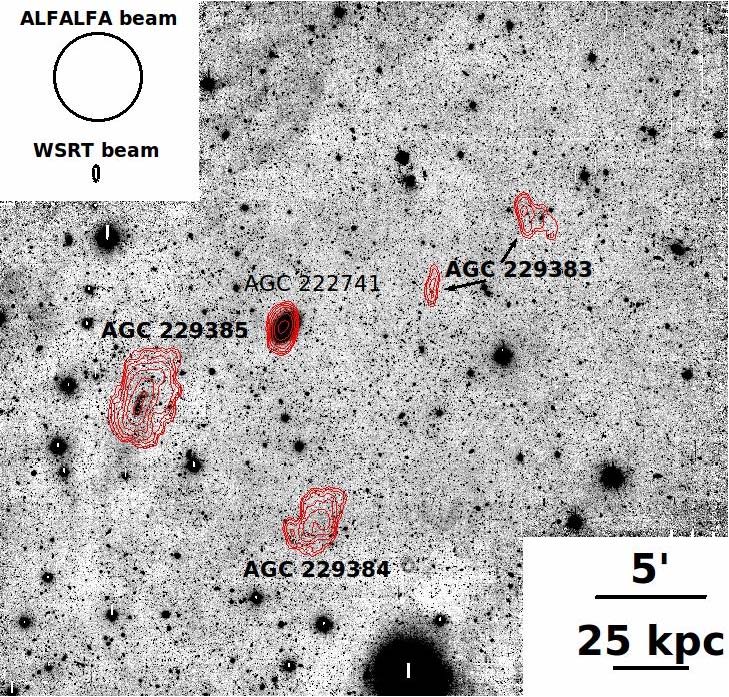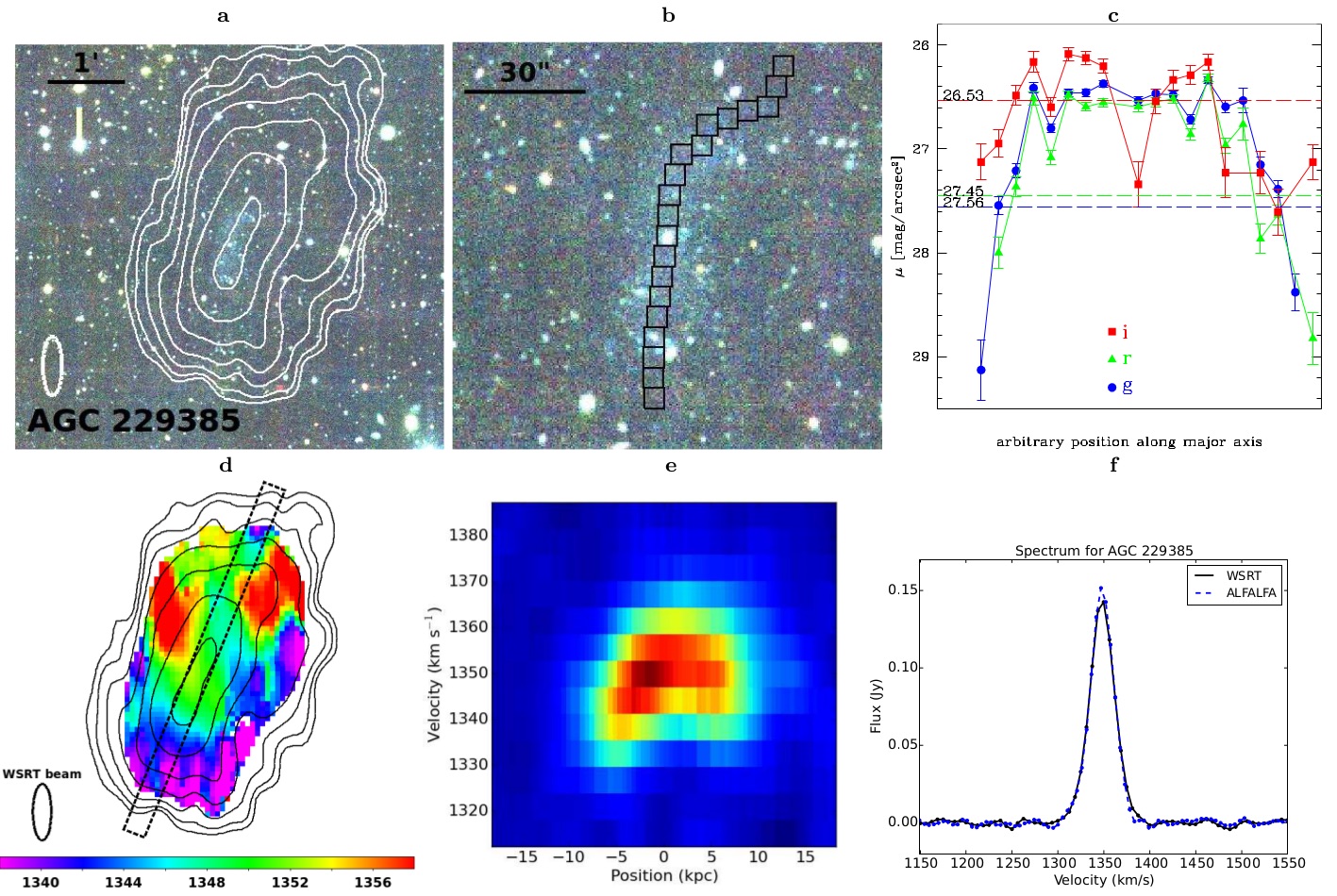
- About WIYN
- Observing at WIYN
Available Instruments
Optical Imaging
Infrared Imaging
Spectroscopy
Observing Tools
Observing Planning
At the Telescope
After Your Run
- Internal Use
WIYN Oversight
Calendars
(Almost) Dark HI Sources in the ALFALFA Survey: The Intriguing Case of HI1232+20
Steven Janowiecki, Lukas Leisman, Gyula Jozsa, John J. Salzer, Martha P. Haynes, Riccardo Giovanelli, Katherine L. Rhode, John M. Cannon, Elizabeth A. K. Adams, William F. Janesh
We have used pODI on the WIYN 3.5m telescope to discover an extremely low surface brightness galaxy with an unexpectedly large amount of neutral hydrogen gas around it.
This object was first detected by the Arecibo radio telescope as part of the ALFALFA survey because it had a very substantial amount of neutral hydrogen - almost the same amount as in the nearby spiral galaxy M33. However, when astronomers looked at images from the Sloan Digital Sky Survey, they saw no galaxy at that position. In order to understand this mysterious source, we used WIYN-pODI to obtain deep multi-wavelength images, and a radio telescope array (WSRT) to acquire sensitive high resolution HI observations.

The image above was taken with pODI and shows the area in the sky where this unusual galaxy lives. The galaxy is called AGC 229385 and there are a few other HI sources nearby which may be related to it as well. The image also shows contours where neutral hydrogen gas was detected by WSRT. Also note that the large galaxy AGC 222741 is actually significantly more farther away than these objects, and so is an unrelated background object. Based on AGC 229385's recession velocity of 1300 km/s, it is most likely at a distance of 25 Mpc, just outside of the outskirts of the Virgo Cluster of galaxies.
This pODI image is so deep that we are able to see the wispy filaments at the upper left, which is emission coming from starlight reflecting off of interstellar dust clouds in our own galaxy.

The figure above depicts our complete set of observations of the ultra low surface brightness galaxy AGC 229385. The optical counterpart is extremely blue, and much smaller than the HI distribution is. We measure the surface brightness in small regions along the galaxy and show its surface brightness profiles in g', r', and i'. It shows a relatively flat surface brightness profile, and a uniformly blue color. Our HI observations show that the HI cloud is rotating but quite slowly, and has a very shallow rotation curve.
The galaxy AGC 229385 is very different from normal galaxies. It has way too much gas compared to its optical brightness, and has the highest gas-mass-to-light ratio ever measured at this precision. Most gas-rich galaxies have MHI/Lg = 0.1 to 4.0 Msun/Lsun, but this galaxy has MHI/Lg = 46! It has almost as much gas as the spiral galaxy M33, but only gives off as much light as faint Local Group dwarf satellite galaxies like GR8 or Sextans A.
We discovered no optical counterparts for the other HI sources in this system, and are still trying to understand how a system like this could be formed. AGC 229385 may have recently started forming stars, which is why it still has so much un-used gas and not very many stars yet. This system may also be interacting with the Virgo Cluster of galaxies, and could be in the process of being accreted onto the cluster.
If we want to understand how galaxies are born, grow, and evolve, we need to see them in all states of their life. The galaxies in this study appear very different than most galaxies, and may be in an unusual stage of their growth. Our work is ongoing but the extremely deep images from WIYN-pODI have been invaluable in helping us discover and understand how galaxies grow and change throughout their lives.
Read the full paper as published in ApJ.





Last modified: 03-Apr-2020 10:29:48 MST
- Observing at WIYN